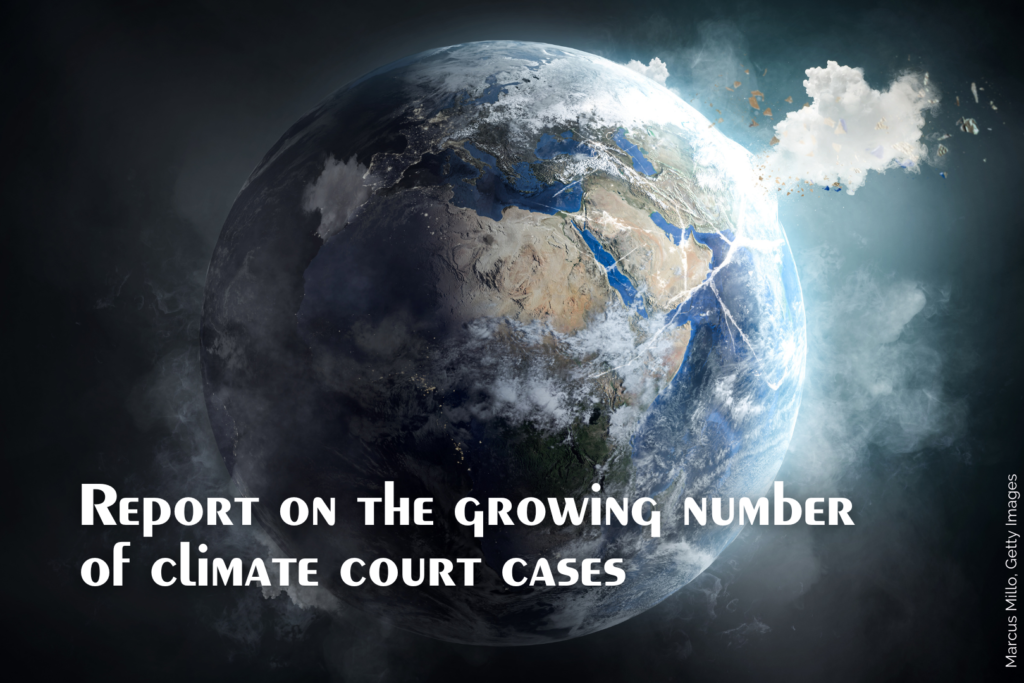The total number of climate change court cases has more than doubled since 2017 and is growing worldwide. hese findings, published today by the UN Environment Program (UNEP) and the Sabin Center for Climate Change Law at Columbia University.
The report, Global Climate Litigation Report: 2023 Status Review, is based on a review of cases focused on climate change law, policy or science collected up to 31 December 2022 by the Sabin Center’s US and Global Climate Change Litigation Databases.
The report provides an overview of key climate litigation cases from the past two years, including historic breakthroughs. As climate litigation increases in frequency and volume, the body of legal precedent grows, forming an increasingly well-defined field of law.
The total number of climate change cases has more than doubled since a first report on the issue, from 884 in 2017 to 2,180 in 2022. While most cases have been brought in the US, climate litigation is taking root all over the world, with about 17 per cent of cases now being reported in developing countries, including Small Island Developing States.
These legal actions were brought in 65 bodies worldwide: in international, regional, and national courts, tribunals, quasi-judicial bodies, and other adjudicatory bodies, including special procedures of the UN and arbitration tribunals.
The report demonstrates how the voices of vulnerable groups are being heard globally: 34 cases have been brought by and on behalf of children and youth under 25 years old, including by girls as young as seven and nine years of age in Pakistan and India respectively, while in Switzerland, plaintiffs are making their case based on the disproportionate impact of climate change on senior women.
According to the report, most ongoing climate litigation falls into one or more of six categories: 1) cases relying on human rights enshrined in international law and national constitutions; 2) challenges to domestic non-enforcement of climate-related laws and policies; 3) litigants seeking to keep fossil fuels in the ground; 4) advocates for greater climate disclosures and an end to greenwashing; 5) claims addressing corporate liability and responsibility for climate harms; and 6) claims addressing failures to adapt to the impacts of climate change.
The report demonstrates how courts are finding strong human rights linkages to climate change. This is leading to greater protections for the most vulnerable groups in society, as well as increased accountability, transparency and justice, compelling governments and corporations to pursue more ambitious climate change mitigation and adaptation goals.
In the future, the report predicts a rise in the number of cases dealing with climate migration, cases brought by Indigenous peoples, local communities and other groups disproportionately affected by climate change, and cases addressing liability following extreme weather events.
For more information on the development and publication of the Global Climate Litigation Report for 2023, please visit:http://surl.li/olnhf


